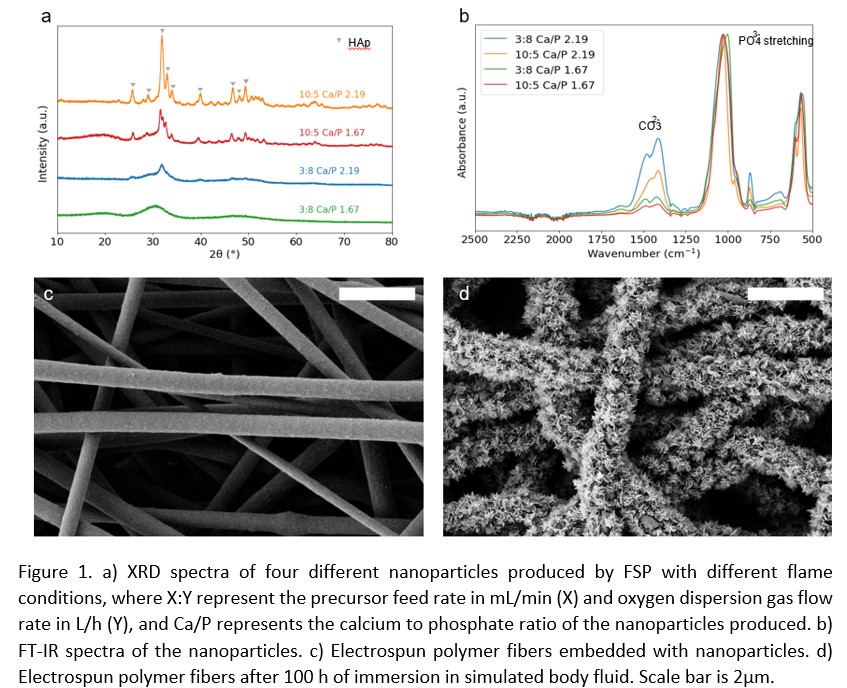(536k) Bioactivity of Flame-Made Calcium Phosphate Bionanomaterials for Bone Tissue Engineering
AIChE Annual Meeting
2022
2022 Annual Meeting
Particle Technology Forum
Poster Session: Particle Technology Forum
Wednesday, November 16, 2022 - 3:30pm to 5:00pm
Therefore, single-step flame spray pyrolysis (FSP) has emerged as a technique for the synthesis of calcium phosphate fractal-like nanoaggregates that consist of spherical calcium phosphate nanoparticles with tuneable physicochemical properties, and with morphology that resembles the natural structure of calcium phosphate in bone tissue.
In this work, calcium phosphate nanoparticles that have different crystallinities, from hydroxyapatite to amorphous calcium phosphate, as well as different sizes and carbonate content, are synthesized by FSP (Figure 1a, 1b). The synthesized nanoparticles can be directly deposited on substrates in-situ during production, or the nanoparticles can be also integrated into polymer electrospun fibers, which mimic the natural bone tissue structure. The bioactivity of the synthesized materials by their cell-free biomineralization capacity was studied as well (Figure 1c, 1d). Finally, the materials could be used to promote stem cell differentiation towards osteoblasts without the need of medium supplementation (Schneider et al 2008). All the materials tested were able to induce cell-free biomineralization, although the rate of deposition and degree of crystallinity were dependent on the identity of the starting material. The results obtained here demonstrate the facile synthesis of calcium phosphate nanoparticles by FSP, the importance of tuning their physicochemical characteristics, and the potential to use these bionanomaterials for the promotion of osseointegration of synthetic implants.
References
Nasiri N, Mukherjee S, Panneerselvan A, Nisbet DR, Tricoli A (2018) ACS Applied Materials and Interfaces
Schneider OD, Loher S, Brunner TJ, Uebersax L, Simonet M, Grass RN, Merkle HP, Stark WJ (2008). Journal of Biomedical Materials Research - Part B Applied Biomaterials.
Zhong L, Qu Y, Shi K, Chu B, Lei M, Huang K, Gu Y, Qian Z (2018). Science China Chemistry.
